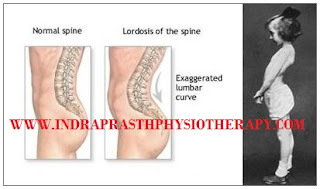CERVICAL SPONDYLOSIS - Cervical spondylosis, also known as cervical osteoarthritis or neck arthritis, is a common, age-related condition that affects the joints and discs in your neck. It develops from wear and tear of the cartilage and bones found in your cervical spine, which is in your neck. While it’s largely due to age, it can be caused by other factors as well. The spinal disks can develop cracks, which allows leakage of the internal cushioning material. This material can press on the spinal cord and nerves, resulting in symptoms such as arm numbness and sciatica.
Factors other than aging can increase your risk of cervical spondylosis. These include:
- neck injuries
- work-related activities that put extra strain on your neck from heavy lifting
- holding your neck in an uncomfortable position for prolonged periods of time or repeating the same neck movements throughout the day (repetitive stress)
- genetic factors
- smoking
- being overweight and inactive
Factors other than aging can increase your risk of cervical spondylosis. These include:
- neck injuries
- work-related activities that put extra strain on your neck from heavy lifting
- holding your neck in an uncomfortable position for prolonged periods of time or repeating the same neck movements throughout the day (repetitive stress)
- genetic factors
- smoking
- being overweight and inactive
Most people with cervical spondylosis don’t have significant symptoms. If symptoms do occur, they can range from mild to severe and may develop gradually or occur suddenly One common symptom is pain around the shoulder blade. Patients will complain of pain along the arm and in the fingers. The pain might increase when:


















































